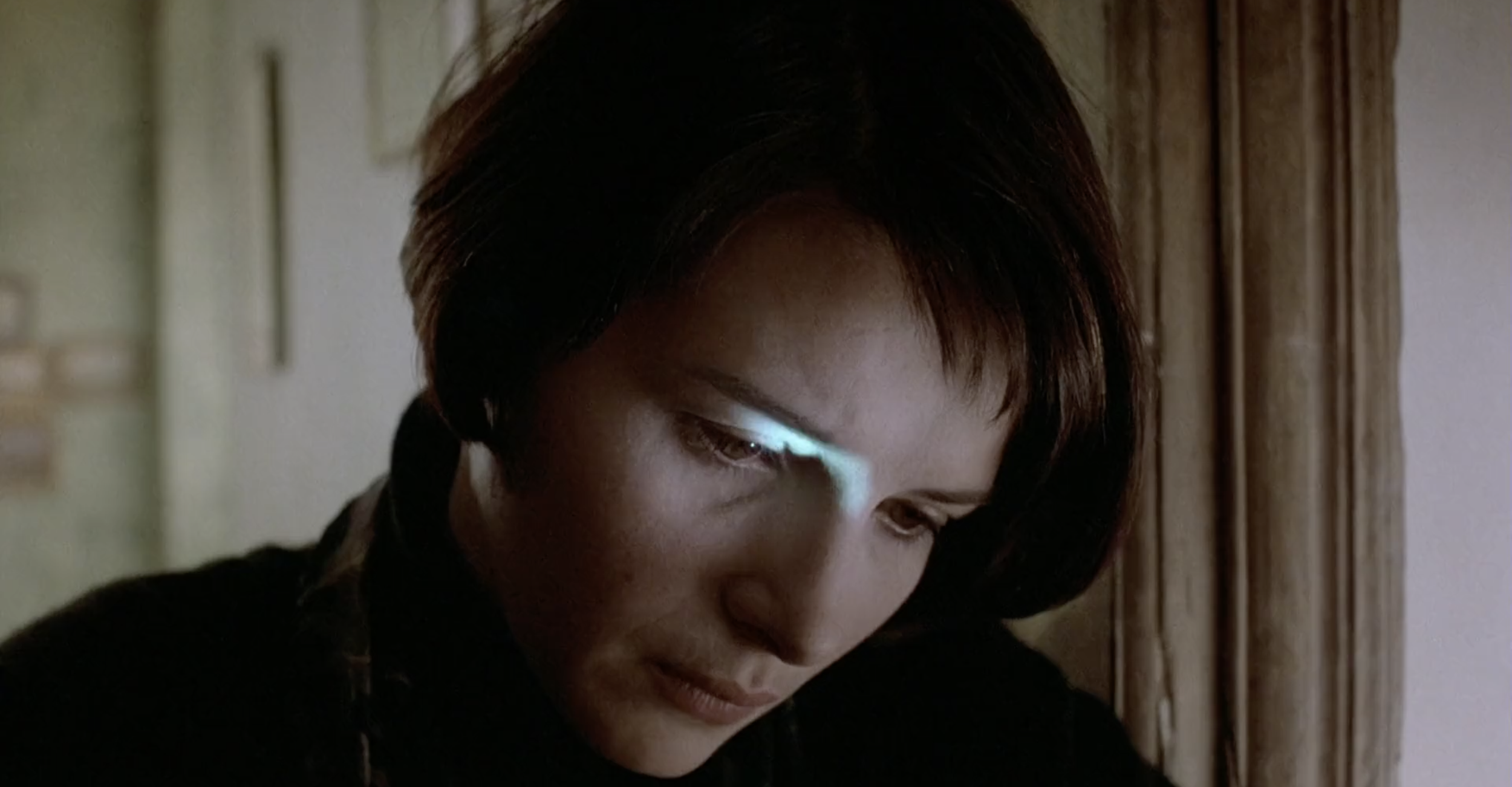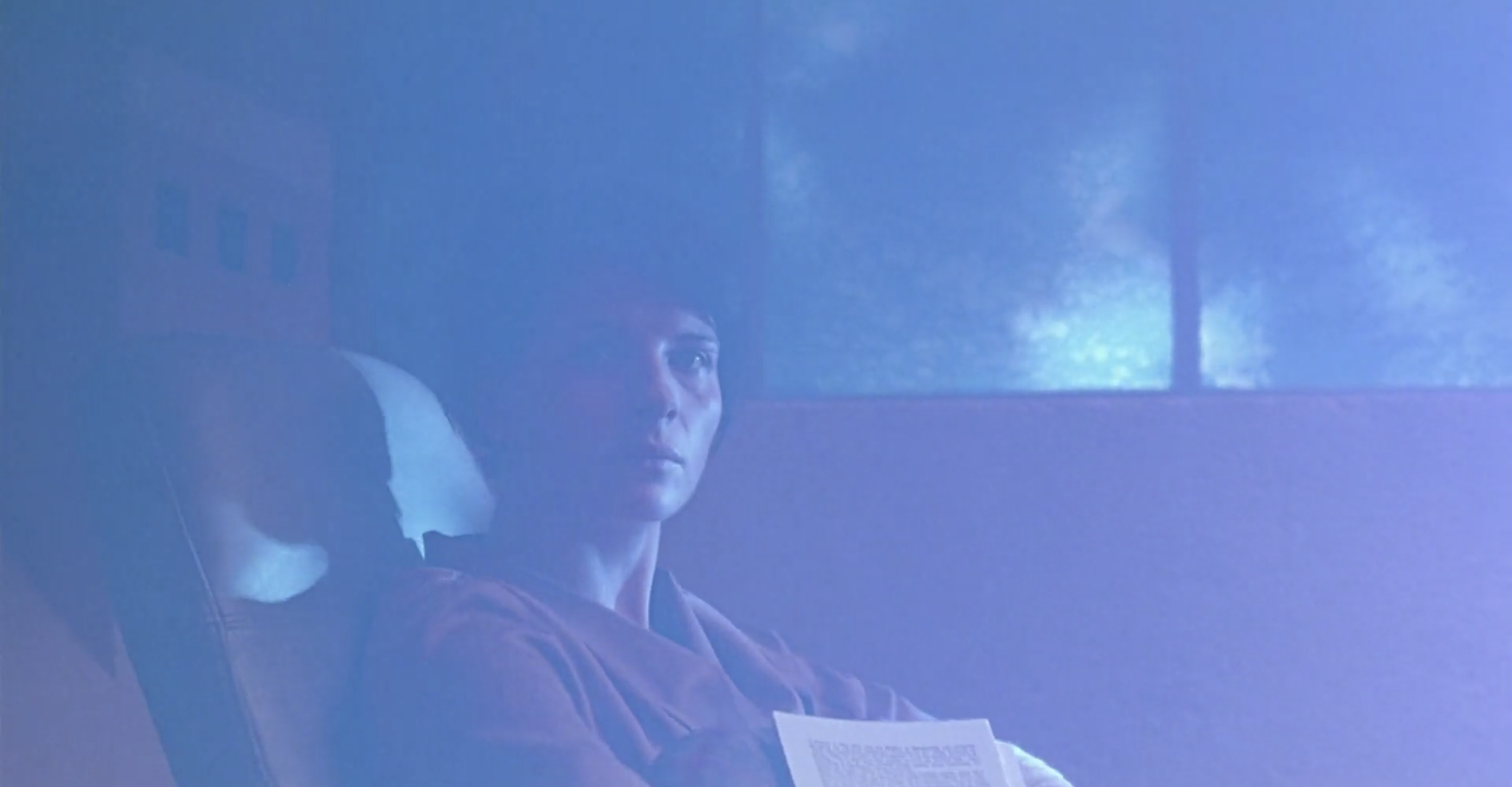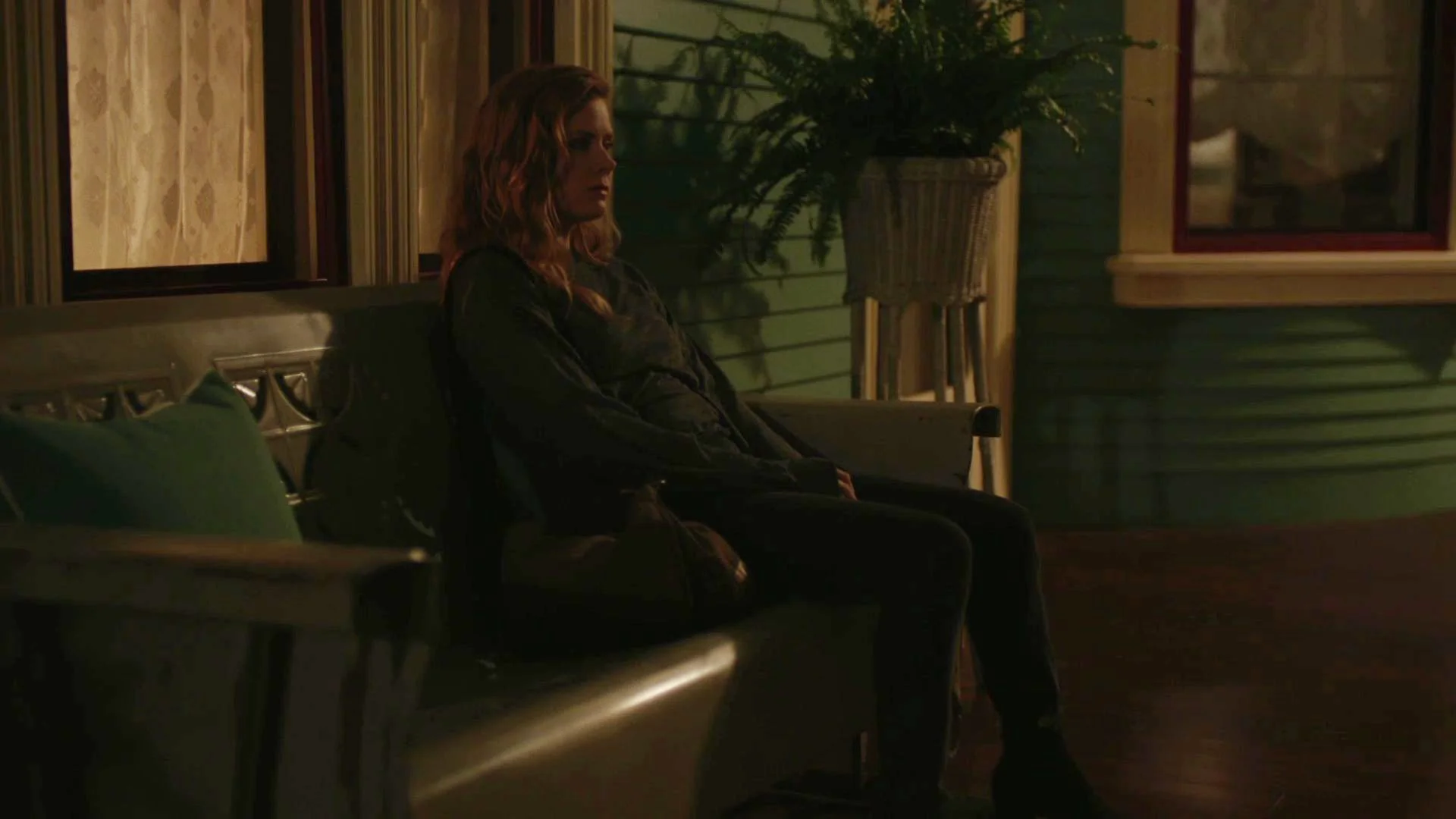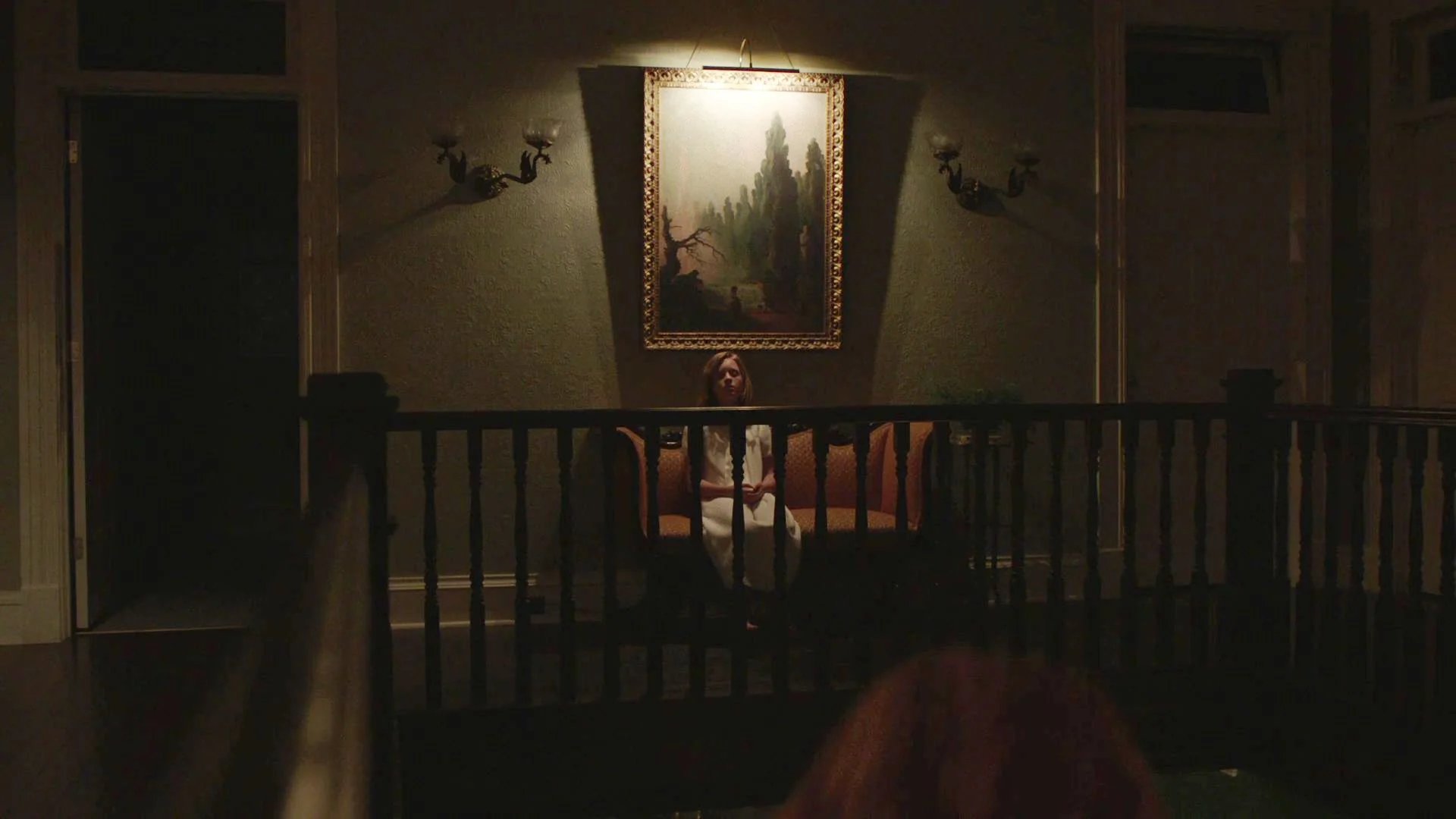Subjective realism in film can be utilised to represent the conditions of the mind, forming a depiction of an inner world specific to a character’s own perception. In contrast to realism, which may aim to depict a character grounded within real-world situations, subjective realism may instead focus on a character’s psychic space. This could include representations of memories, visions, fantasies, dreams, nightmares, feelings and emotions. With the unique ability to combine performance with moving image and sound, film can provide a means for representing subjectivity and emotion in storytelling, evoked through the cohesion of directing, writing, performance, production design, cinematography, editing, sound design and musical composition. I have collected and reviewed research material relating to this area of creative enquiry including work by theorists Mathew Campora, David Bordwell, Adrian Martin, Eleftheria Thanouli and Bruce Kawin. Linked to these works, I have conducted a cinematic content analysis of Jennifer Kent’s film, The Babadook (2014), Krzysztof Kieślowski’s film, Three Colours: Blue (1993), Jean-Marc Vallée’s series, and Sharp Objects (2018). Each of these works explore the rich inner world of their protagonists through the use of cinematic techniques based in visual, temporal and aural modes.
Subjective realism focuses on the representation of characters with an emphasis on their inner world, rather than a depiction of their physical actions. In this sense, a film audience is given insight into a character’s mental state or psyche. Theorist, Eleftheria Thanouli states that subjective realism “…refers to the depiction of characters with an emphasis on their psychological state.” (2009, p. 2) By focusing on the representation of inner worlds and emotion, a character’s subjective experience can be suggested. Film scholar and academic, Mathew Campora, writes on this idea in his book, Subjective Realist Cinema: from Expressionism to Inception (2014). Linked to the work of theorist Bruce Kawin, Campora notes that the emphasis may be on what a character is thinking, rather than an investigation of their actions (2014). In sympathy with this notion, theorist David Bordwell suggests that subjective realism “…deals with the reality of the imagination…as if it were as real as the world before us” (1985, p. 206). By enacting representations in this way, an impression of a character’s inner world may be rendered on screen. Kawin, cited by theorist Edward Branigan, suggests that the following techniques can enact first person subjectivity: voice over, subjective sound, subjective camera and mindscreen (Branigan, 1983, p. 221). I will explore these techniques and further examples in the following text.
In devising and developing my capstone project, my initial research led me to psychological horror film theory. I looked to the haunting in Jennifer Kent’s, The Babadook (2014) as a personification of trauma and repressed emotion. Centred around Amelia Vanek (Essie Davis) and her troubled son, Sam (Noah Wiseman), The Babadook (2014) utilises filmic techniques to enact the experiences of motherhood, grief and loss. Amelia has internalised her grief, carrying the emotional burden of her husband, Oskar’s (Ben Winspear) death. She keeps his possessions locked in the basement; his violin, musical scores, photographs and clothes stagnating in the dark room. When the ominous children’s book, ‘Mister Babadook’, appears in her son’s bedroom, it acts as the catalyst for Amelia’s growing delusions, hallucinations and visions. Kent has used the storybook as a symbol for Amelia’s grief, providing a means for Amelia’s internal reality to be externalised. The haunting pages use child-like rhyming sentences, contrasted with dark sentiments: “If it’s in a word, or it’s in a look, you can’t get rid of the Babadook.” The strange creature in “funny disguise”; a hat and coat, is used as a metaphor for grief and depression. There are subtle hints to suggest that Amelia was a children’s book author before Sam was born, and is therefore the book’s creator. The Babadook’s presence begins to pervade Amelia’s reality; she starts to see the creature everywhere. Using an evocative soundscape, Kent enacts the presence of the Babadook with insect-like buzzing and scurrying sounds. Dark space features in many of the shots, used to further create an unsettling feeling. Coats and jackets take on a new meaning when coded through Amelia’s viewpoint. Unable to reconcile her grief, the Babadook grows stronger, moving from representations as a 2D illustration in a book to an embodied creature.
INNER WORLDS, PSYCHIC SPACE AND EMOTIONAL LANDSCAPES
SOURCE REVIEW
Figures 1 - 4, Still frames from The Babadook
Taking the form of Oskar, the Babadook terrorises Amelia by forcing her to relieve the horrific moment of his death. Transforming the bedroom space into an otherworldy void, Oskar emerges from the shadows. Evoking the car accident through sound, a blaring horn and car brakes sound fill the sonic space (depicted below). Ultimately, Amelia’s confrontation with the Babadook leads her to control her grief. She doesn’t eliminate its presence, but chooses to house it in a space of her own making. The basement, previously seen as a repository for her husband’s belongings, now becomes the home of the Babadook creature. Theorist Paul Mitchell suggests that, “Amelia has accepted Oskar’s death—as symbolised by the worms she feeds to the invisible monster—and, more importantly, her own survival, even though she will always be affected by both” (2019, p. 187). Given that Amelia’s haunting inner world is rendered on screen, the film can be considered a subjective realist work.
Video 1, The Babadook
Emotional states of trauma and grief are depicted in Krzysztof Kieślowski’s Three Colours: Blue (1993). Kieslowśki presents audiences with Julie’s (Juliette Binoche) harrowing grief as she suffers through the unexpected death of her husband and only child. After a failed suicide attempt, she sells all her possessions and moves away from her home in a grief-stricken state. The only object she keeps is her daughter’s hanging mobile, comprised of long strings of blue crystal. Symbolism, as a method of “…revealing or suggesting immaterial, ideal, or otherwise intangible truth or states” (Merriam-Wester, n.d., retrieved 29/08/22) can be understood as a means of creating underlying meaning. As a symbol of her loss, the colour blue is a recurring visual motif throughout the work; seen in her daughter’s lollipop, the mattress, the pool and the pen she writes music with. It’s also used in ambiguous moments where light hits her face, sometimes motivated by the reflected light of the mobile, and at other times, as an ambiguous representation of her inner thoughts.
Figures 5 - 10, Still frames from Three Colours: Blue
Suggesting a fluidity between Julie’s physical reality, as a patient at the hospital, and her psychic space, alive with the memories of the past, Kieslowśki aligns the audience with the emotional impact of Julie’s internal conflict. Music is used as aural symbolism, enacting the presence of Julie’s persistent memories. An example of this appears in the film at 10’30” where while recovering in hospital, Julie jolts awake, bombarded with the intense and heightened sound of her husband’s orchestral composition. The music is non-diegetic, it is entirely in her mind. The volume of this composition is jarring, suggesting the depth of Julie’s feeling and the pervasive qualities of grief. The camera sweeps in to focus on Julie’s face, revealing her expression of despair. Patterns of blue light intrude on Julie in moments of sadness. An example of this occurs at 36’50” when Julie is locked out on the stairwell at night. She begins to hear her husband’s music in her mind. Slowly, ambiguous blue shapes fade into the frame with the tempo of the music. Using one single shot, the surreal moment is drawn out to express the longevity of these feelings. By using these filmic techniques, Kieslowśki enacts Julie’s on the screen. Both examples are presented in the video below.
Australian theorist Adrian Martin, explores cinema’s elusive power through a series of essays based in film criticism, aesthetics, genre and philosophy in his book, Mysteries of Cinema (2020). Martin’s discussion of the mental images that are used in film references the work of Andrei Tarkovsky, suggesting that hallucinatory moments woven into the everyday world of the cinema can speak to deeper issues (2020). With a similar approach, Jean-Marc Vallée’s television series, Sharp Objects (2018) utilises subjective realist storytelling techniques to convey protagonist Camille Preaker’s (Amy Adams) inner world. When reporter, Camille, is sent to her hometown, Wind Gap, to investigate the murders of two young girls, invasive memories begin to re-surface. Camille is traumatised by the loss of her younger sister, Marian Crellin (Lulu Wilson), and the behaviour of her controlling mother, Adora Crellin (Patricia Clarkson). Trauma, which can be defined as a ‘psychic injury’ caused by emotional shock, can be understood as a highly subjective, sensory experience. Vallée imbues the audience with Camille’s inner world through the use of a fluid, non-linear approach to the storytelling, including representations of Camille’s dreams, embodied memories, impressions and visions. Related to Kawin’s suggestion of first person techniques, this work reflects the use of “mindscreen”; the depiction of what a character is thinking or dreaming about, or their “mind’s eye” (1978, p. 10). The series opens with two young girls roller-skating down the road. They take off their skates and sneak home; running up the stairs of a grand Southern home. They move through the rooms of a contemporary home, as the buzzing sound design rises. The hand-held camera follows the girls into a bedroom. When one of the young girls pokes a sleeping Camille in the hand with a sharp pin, Camille suddenly awakens. At this point, the sound design cuts off, and we become aware that we’ve been inside Camille’s dream. This fluidity between dream and waking reality reflects Vallée’s approach to establishing Camille’s chaotic inner world and persistent memories.
Video 2, Three Colours: Blue
Vallée furthers this subjective representation by utilising editing techniques to place present day Camille alongside her past memories. Leaning into diegesis with the sound design, Vallée creates a strong sensation of the prevalence of Camille’s memories. When Camille first arrives at the door of her family home, she imagines herself back in the past. Dialogue from a memory bleeds into the moment, as Camille remembers a conversation with her younger sister. Editing has been used to blur the line between past Camille and present Camille. The combination of these filmic techniques suggests the embodied sensations of trauma; Camille is triggered by her return to her toxic childhood home.
Video 3, Sharp Objects
Video 4, Sharp Objects
By presenting audiences with Camille’s visions, Vallée further suggests Camille’s inner world. Camille’s deceased sister, Marian, is shown sitting around the family home. Silent and passive, it is as though she’s become part of the scenery. Camille sights Marion as she leaves the house (pictured below). Illuminated by a single overhead light, Marian sits in her white nightgown, dwarfed by the elaborate furnishings in the room. By presenting audiences with Camille’s impressions in this way, a deep understanding of her fragile mental state is enacted.
Figure 11, Sharp Objects
To summarise, by exploring the critical theories of Mathew Campora, David Bordwell, Adrian Martin, Eleftheria Thanouli and Bruce Kawin, I have explored the applications of subjective realist techniques in film-based works. A cinematic content analysis of The Babadook (2014), Sharp Objects (2018) and Three Colours: Blue (1993), has been conducted to document filmic techniques used to enact character subjectivity on screen. Through the examination of these works I have explored the potential of visual metaphors to express interiority, the significance of cinematography to represent the ‘unseen’, the importance of temporal affectations in the edit to suggest personal experience and the evocative power of sound and music to reflect emotion. These techniques have been used to create a strong sense of character subjectivity.


















